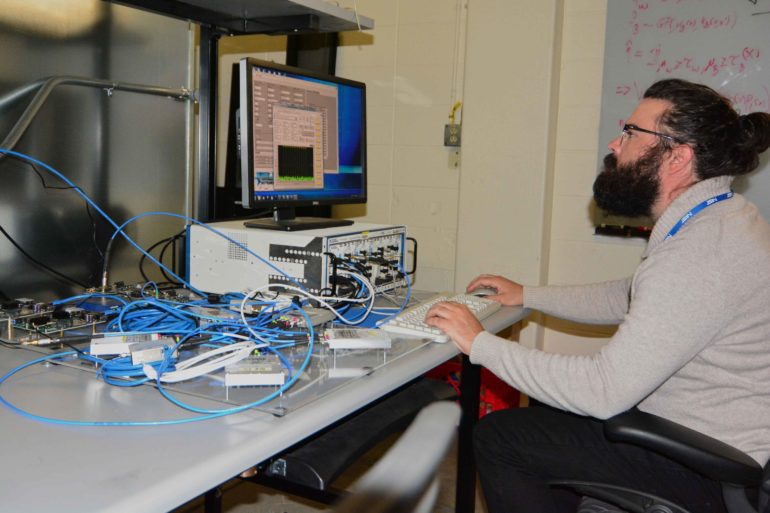Researchers at the National Institute of Standards and Technology (NIST) have developed a modeling technique that can save time and money in estimating how to configure wireless communications systems to share the same transmission frequencies. The NIST model reduces the number of measurements needed to estimate reliable configurations by about 33%.
The model is an outcome of NIST’s use of statistics to develop new tools that can meet complex challenges in enabling wireless systems to share limited spectrum. The new model was developed for two-way coexistence tests, which evaluate two wireless systems under various transmission scenarios to find the configurations in which both systems meet key performance thresholds.
“We’re introducing a new method for designing communications experiments,” co-author and group leader Jason Coder said. “This new method is adaptable, meaning that it utilizes the results of past measurements on a device to inform the next set of measurements. Using current methods, I might test a device in 100 different configurations to characterize its performance. But with this new adaptable method, I might be able to achieve the same result with fewer measurements.”
NIST researchers studied coexistence between a Wi-Fi and a Bluetooth system operating in the same frequency bands. Researchers measured two arbitrarily chosen performance criteria, Bluetooth packet error rate below 3% and Wi-Fi data rate above 43 megabits (million bits) per second, at various Bluetooth transmission powers. The conventional method of evaluating coexistence would be to sample virtually all possible configurations and monitor the resulting performance of both systems, an overwhelming task for all but the simplest situations.
By contrast, the new NIST method involves a sequential series of experiments that select transmission configurations based on a small set of previously collected coexistence data. Researchers used machine learning to estimate the output of an unknown mathematical function based on a small set of measurements and assumptions about how rapidly the function can change.
Researchers measured performance at many transmission powers, including those where models suggested there was only a small possibility of coexistence. As more measurements were made and models improved, the experimental design focused almost entirely on transmission configurations leading to coexistence, thereby reducing the number of measurements needed to determine success.
Researchers simulated the experiment 50 times, using actual data from previous lab experiments. They needed an average of about eight measurements to identify at least 95% of configurations resulting in successful spectrum sharing, about 33% fewer than conventional testing of all configurations requiring about 12 measurements.
“The benefit to the larger community is that we may be able to significantly reduce the amount of time industry spends characterizing their devices, say for example, when they’re trying to navigate the regulatory approval process,” Coder said. “In some cases, we are enabling them to demonstrate compliance and performance with fewer measurements. This can save time, money, and reduce the barriers for a new product to enter the market. From the research side it should be a great new tool that enables us to characterize and understand complex systems more quickly and efficiently.”
The new model is expected to work for up to 10 devices operating simultaneously. NIST researchers are investigating other new techniques using machine learning and artificial intelligence that should scale up to larger problems.
NIST formula may help 5G wireless networks efficiently share communications frequencies
More information:
Mathematician Jacob Rezac uses a NIST modeling technique to find configurations that enable Wi-Fi and Bluetooth devices (located amid the blue wires) to share communications channels. Coder/NIST J.D. Rezac, N.C. Hess and J.B. Coder. Estimating Regions of Wireless Coexistence with Gaussian Process Surrogate Models. 2021 Joint IEEE International Symposium on Electromagnetic Compatibility, Signal & Power Integrity, and EMC Europe. Presented Aug. 12, 2021.
Provided by
National Institute of Standards and Technology
Citation:
Encouraging coexistence: New model cuts measurement needs for spectrum sharing by about 33% (2021, August 12)
retrieved 12 August 2021
from https://techxplore.com/news/2021-08-coexistence-spectrum.html
This document is subject to copyright. Apart from any fair dealing for the purpose of private study or research, no
part may be reproduced without the written permission. The content is provided for information purposes only.



